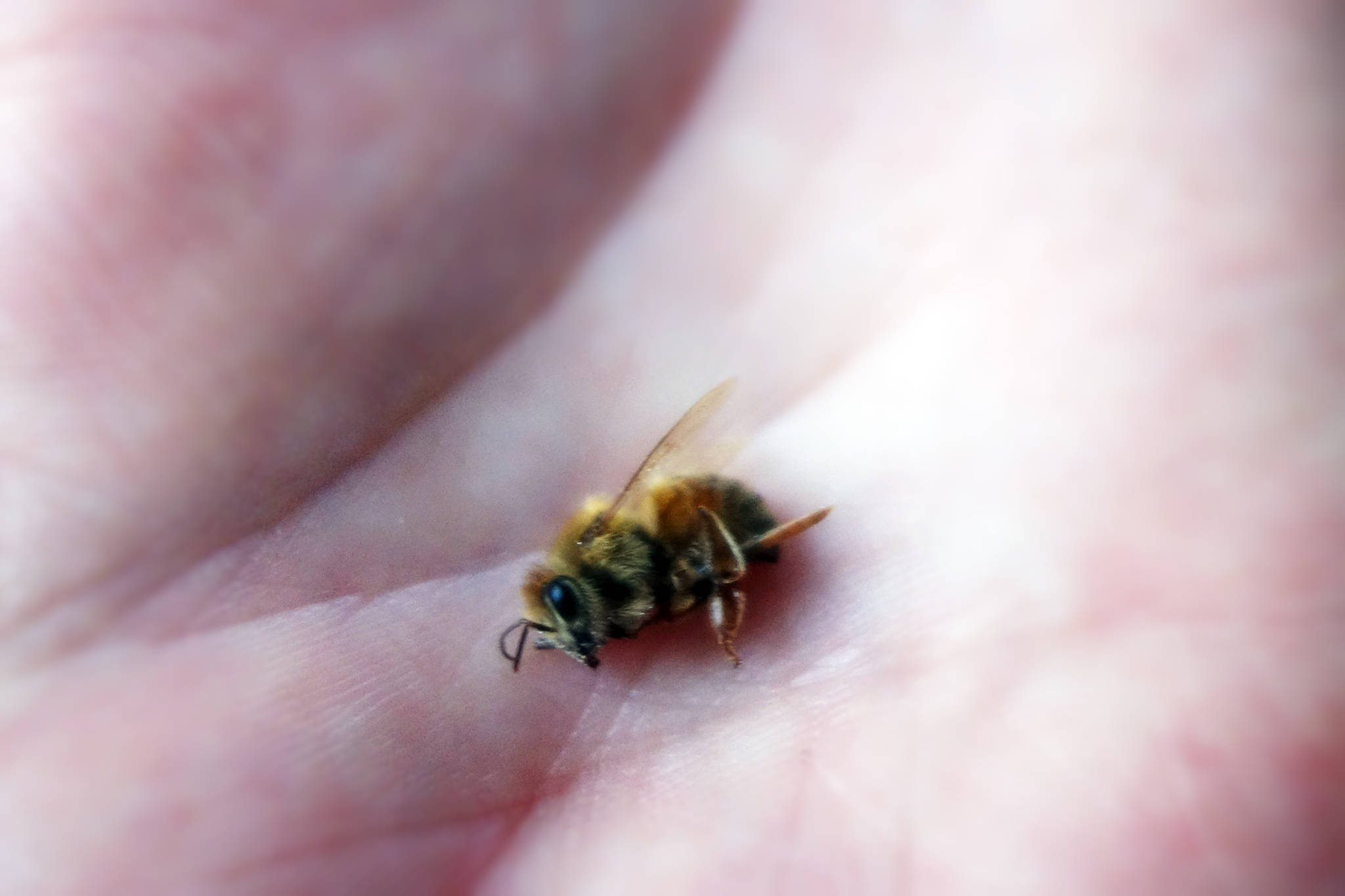Bees are a critical part of ecosystems across the world, helping to pollinate something like 80 percent of flowering plants in the United States.
But bees don’t like the cold. So how do they handle Alaska weather?
“Our unique Alaskan challenges are the bears and the weather,” said Raylynn Lawless, an amateur beekeeper living in Juneau. “Overwintering is also a challenge in Southeast because of our cold wet climate, the bees need to collect enough pollen to create enough honey to sustain themselves through the winter.”
Lawless has been beekeeping for about two years; this spring will be her third season tending her hive. She credited trial and error and a lot of support and information from online beekeeping communities for her success so far.
“We have a sturdy reliable electric fence around our beehive to keep bees, people and bears safe,” Lawless said. “Beekeeping for me has been a lot of trial and error. I make an error as their beekeeper and they correct it; it is absolutely fascinating to watch how hard they work every day and then such a joy to see all of their hard work within the hive.”
Lawless has Old World Carniolan bees, a breed from central Europe adapted for colder, wetter climates like Southeast Alaska’s, Lawless said. The bees can source their pollen from a variety of sources, which helps to pollinate plants as the bees make their rounds.
“There are so many different types of plants that bees can take pollen from. We see all sorts of different colors in our hive,” Lawless said. “I have personally noticed that the honeybees in our hive love the fireweed when it’s blooming, and we have a lot of it.”
The gathering season for bees varies with the temperature, with longer seasons coming with warmer weather. Bees need to gather a certain amount of food for their hive to survive the winter, which can be impeded if the weather is foul. Bees don’t fly well or willingly in the rain, Lawless said.
“Our season varies year by year but is usually around the beginning of April until about the end of September/October,” Lawless said. “This November was so warm that we had bees flying around our hive just a few weeks ago.”
Though bee populations are in a catastrophic crash dive across the world, threatening agriculture everywhere, there are some things people can do locally to help protect bee populations in Alaska, Lawless said.
“Stop using any kind of pesticides — these types of chemicals can potentially kill a whole hive. Don’t kill bees just because you are scared they can sting you,” Lawless said. “Most of the time when you see a bee, it is out foraging and not interested in stinging. Always remain calm around any type of bee to minimize the risk of sting, even wasps — wasps are mean little buggers — but the calmer a person is the better.”
Lawless also encouraged growing flowering plants to support the bees as they’re foraging and if one is interested, trying their own hand at beekeeping.
With nearly three years of experience, Lawless said she still has a lot to learn, but looks forward to the journey.
“Even after answering all these questions, I still have not even begun to scratch the surface of the amazing world of bees and beekeeping,” Lawless said. “I do want to reiterate that I am a very new beekeeper with 2.5 years of experience under my belt, so I still have a lot left to learn from these amazing insects. What a grand adventure we hope it to be.”
• Contact reporter Michael S. Lockett at 757-621-1197 or mlockett@juneauempire.com.

